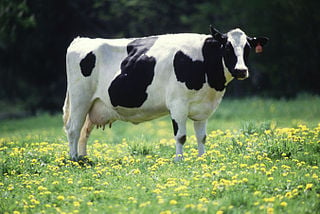Picture an operating dairy farm that is first rate in every way, including environmentally.
Carrying this farther, now imagine that the electricity the farm uses to power such devices as automated cow-milking equipment and refrigeration units to keep the drawn milk chilled while in storage to name but two, well, that is farm-generated.
If that weren’t enough, in this hypothetical, the trucks that transport the milk to the processing, packaging and distribution center run on biomethane (otherwise known as renewable natural gas); in this case, it having been transformed from the manure the cows on the farm produce, the transformation process done in an environmentally conscious, sustainable and cost-effective manner; with the odors connected with that manure, by the way, kept at bay.
If you haven’t already guessed the principal element in this scenario is what is referred to as anaerobic digestion, the process enabling the conversion of manure from cows into, in this instance, energy and fuel.
Related to this and in a real-world application this time, authors Douglas W. Williams and Diana Gould-Wells in “Biogas Production: From a covered lagoon digester and utilization in a microturbine,” featured in the Resource, Engineering & Technology for a Sustainable World Apr. 2004 periodical issue, wrote: “The environmental benefits of a covered lagoon digester system, although not quantified in a measurable economic value, are considerable. By virtue of the cover capturing the gas emissions from the dairy manure, both odor and the release of greenhouse gases are considerably reduced.”1
Biogas versus biomethane or renewable natural gas: What are they and what distinguishes one from the other?
At its most basic level, biogas is created from decomposing organic matter sans any oxygen. And it is composed mainly of, according to information at Wikipedia, carbon dioxide (CO2) and methane (CH4).
Also according to Wikipedia renewable natural gas (RNG) which is otherwise known as biomethane or even sustainable natural gas, on the other hand, is effectively a biogas upgrade, containing more of the CH4 component (90 percent) and less of the CO2.
Both biogas and renewable natural gases do not occur in nature naturally or, in other words, are non-naturally-occurring.
And, natural or ‘non-renewable’ gas?
Natural gas, like biogas, is also formed from organic matter being in a state of decomposition, the difference here being that unlike in the case of biogas, the this-time subsurface decaying plant and animal material that has been in the ground and is millions of years old has also been subjected to “intense heat and pressure.” It is mainly made up of CH4, but other chemical substances can be present in the gas as well, all of this according to Wikipedia also.
Natural gas, as the name suggests, is a gas that occurs naturally.
The right fuel for the right job
There are a number of reasons for wanting to seek a move away from fossil fuel-based natural gas to alternatives like renewable natural gas, for example, environmental (air, water, soil, climate) and human health, perhaps chief among them.
But breaking the fossil-fuel addiction can be a difficult proposition especially when processes like drilling and hydraulic fracturing (“fracking”), refining and corresponding distribution (shipping) of, to name but three, mean jobs, lots of jobs, within the sector. Those kinds of livelihoods are attractive to more than just a few.
It’s tough to compete with that and to make inroads the competition will have its work cut out.
Coming at this from the position of decarbonization, one enterprising business venture, OptiFuel Systems, appears to have gained quite a lot of ground.
In its “Optifuel Combats Climate Crisis with RNG Hybrid Line-Haul Locomotive …” Jul. 22, 2020 press release the concern explained: “OptiFuel Systems (‘OptiFuel’), a system integrator of Cummins and BAE Systems hybrid power products for decarbonizing the rail, marine, and microgrid power market, is in the process of finalizing a $2.6 million U.S. Department of Energy (DOE) grant to demonstrate a preproduction Renewable Natural Gas (RNG) hybrid 4,300 hp [horsepower] line-haul locomotive. The program will demonstrate that a suite of commercially available, EPA rail-certified engines present a near-term, low risk solution to create an affordable RNG hybrid line-haul locomotive with near zero emissions while simultaneously improving fuel cost by 50%. This new program, partially funded with the DOE grant, will allow pre-production testing at AAR’s [Association of American Railroads] Transportation Technology Center, Inc. (TTCI) and will operate in service with a regional [Class II] railroad to validate that OptiFuel’s low-risk, affordable technology can also be applied in the higher horsepower freight and passenger locomotive market.”
Furthermore, OptiFuel in the same release added, “… OptiFuel’s 4,300 hp RNG hybrid line-haul locomotive is expected to emit 0.00 g/bhp-hr [grams per brake-horsepower-hour] of NOx, a complete NOx elimination; and emit 0.00 g/bhp-hr of PM, a complete PM elimination..[sic] Using RNG as the fuel, OptiFuel’s locomotive will dramatically lower greenhouse gas (GHG) emissions resulting in a neutral or negative carbon footprint, in addition to far exceeding California’s Tier 5 locomotive petition standards to the U.S. EPA.” This, while “[t]he U.S. locomotive fleet average … for fine Particulate Matter (PM) emissions is 0.22 g/bhp-hr,” OptiFuel continued.
Breaking news!
Speaking of California, right this very moment there appears to be an effort afoot to ban natural gas in new buildings and in some areas complete use disallowance in commercial structures. Whether this will be universally applied throughout the entire state remains to be seen.
Updated: Jan. 21, 2024 at 10:21 a.m. PST.

Notes
- Douglas W. Williams and Diana Gould-Wells, “Biogas Production: From a covered lagoon digester and utilization in a microturbine,” Resource, Engineering & Technology for a Sustainable World, Apr. 2004, (Vol. 11, No. 3), pp. 11-12
Image at bottom: Linda Krop
Published by Alan Kandel
